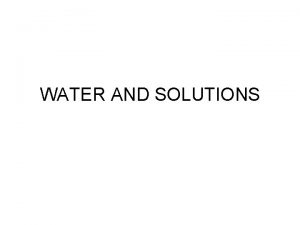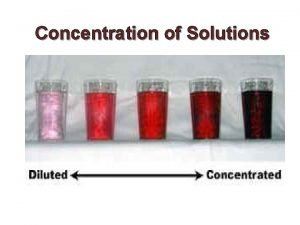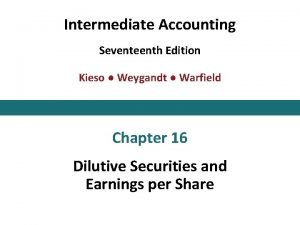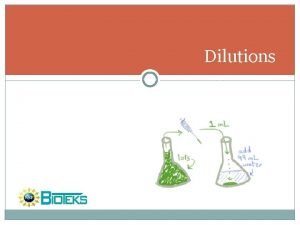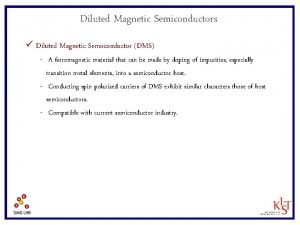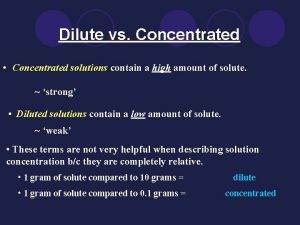HOW TO IDENTIFY THE CONCENTRATED AND DILUTED SOLUTIONS






- Slides: 6

HOW TO IDENTIFY THE CONCENTRATED AND DILUTED SOLUTIONS The first step in solving dilution question

SAMPLE QUESTION • You are required to produce 200 m. L of a solution of potassium permanganate such that when 50 m. L is diluted to 200 m. L a 1 in 400 solution is produced. You have available a stock solution of 10% w/v potassium permanganate.

SOLUTIONS • The concentrated solution = 10% w/v • Diluted solution = 1 in 400

SYNCHRONIZE THE TWO CONCENTRATION • Since the solution have different units of concentration, the next step is to synchronize the two concentrations • We have to convert 1 in 400 into %w/v • 1 in 400 = 1 g in 400 ml • % w/v is defined as amount of drug in 100 m. L • 1 g in 400 m. L into %w/v = (100 ml/400 ml) x 1 g = 0. 25%

DETERMINE THE DILUTION FACTOR • Now that the two concentrations are synchronized, we can proceed to determine the dilution factor. • Concentrated solution (10% w/v) → Diluted solution (0. 25%) • Dilution factor is simply dividing the bigger value by the smaller value • Dilution factor: 10%/0. 25% = x 40 • What this means is that to reduce the concentration of a solution of strength 10%w/v to 0. 25%, we need to add a diluent such that the final volume of the diluted solution would x 40 of the original concentrated solution

EXAMPLE • `If the initial volume of a concentrated solution is 100 m. L and strength is 10% w/v. • To convert this to a concentration of 0. 25%w/v, the final volume after dilution should be • 100 m. L x 40 = 4000 m. L • Thus the volume of diluent required = 4000 m. L – 100 m. L = 3900 m. L • The next lesson will focus on how to use the dilution factor to solve dilution questions
